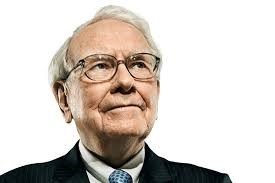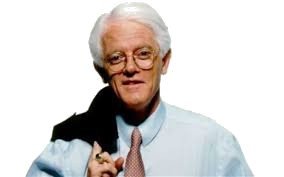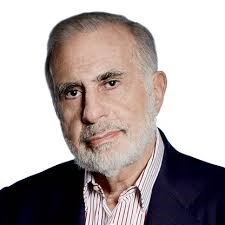
Investors regularly seek wisdom and inspiration from the all-time greats of the investment world. After all, there is only a select group of investors who have managed to outperform consistently on a large scale. Students of business and investing ought to learn from the greats; not seeking to merely copy, but more so trying to become the best version of themselves along the way.
This article is an effort to take a deeper look at the investment philosophies and strategies of a select group of investors that inspire us at GeoInvesting. Our diverse team allows us to implement several strategies, which I find extremely fun. Our current profile choices are: Warren Buffett, Charlie Munger, Peter Lynch, Carl Icahn, and George Soros.
When studying these five investors, one quickly discovers a common theme: they are all painfully aware of the relationship between price and underlying economics of their investment. In other words, they all know how to recognize value! Even though they are implementing their investment philosophies in different ways and through different asset classes, they are all value investors at heart. In their own right, all of them have contributed important ideas and nuances to the value investing framework.
The Greats Of Value Investing
Warren Buffett

Warren Buffett is probably the one individual that has contributed the most to the widespread acknowledgement of Ben Graham’s investing strategy that he called “value investing”. The original Buffett partnership was practicing the old-school style of value investing, often called “picking up cigar butts” where a dirt cheap, but unattractive asset, was bought below asset value.
Over the years, Buffett developed and let go of his initial fixation on price, and turned his focus more towards the potential of the underlying business he was buying.
Buffett’s investment maxims are as simple as they come, he aspires to buy: (1) a business that he understands (2) with management that he likes (3) at a price that makes sense.
It is interesting to note that Buffett does not aspire to fix companies, nor is he looking for a specific catalyst to increase the value of his investment. The basic assumption is that, in the long run, assets will reflect their underlying “intrinsic” or “true” value.
“In the short term the market is a popularity contest; in the long term it is a weighing machine.”
— Warren Buffett
Charlie Munger

Buffett’s partner at Berkshire Hathaway, Charlie Munger is widely admired – not only for his advice on investing, but for his general worldly wisdom. Charlie began his career as a lawyer and did not really get involved in investing until his 30s. Not being formally educated in the field, Charlie developed his own mental models. While he recognized the basic merits of Ben Graham’s value investing strategy, he quickly developed his own twist on the strategy. Rather than buying an average business for a great price, Munger advocated that it is better to buy a great business at a reasonable price.
Whether Charlie thought about it in these terms or not, what he was advocating was what we now call Growth at a Reasonable Price, or GARP, investing. Key to understanding this nuance to the value investing philosophy is the idea that intrinsic value is not necessarily a fixed, but rather a moving target.
The intrinsic value of an asset is the sum of all its future cash flows discounted back to present. Charlie recognized that well run businesses can increase their capacities and production substantially, thereby increasing future cash flows and the intrinsic value in ways that cannot be quantified at the present.
Arguably, the main soft factors that Berkshire stresses are management and competitive moat. While the moat analogy has gotten a lot of attention, Munger has reconciled his view on the importance of management compared to the business. While in the old days they used to joke that they would “invest in a business any fool can run, because someday a fool will”, nowadays Munger stresses more than ever the importance of a strong management team that protects and grows the intrinsic value of the business they run.
“All intelligent investing is value investing, acquiring more than you are paying for. You must value the business in order to value the stock.”
— Charlie Munger
Peter Lynch

Peter Lynch’s series of timeless books on investing, “One up on Wall Street”, “Beating the Street” and “Learn to Earn”, provide practical advice for the those interested in developing a disciplined approach to fundamental investing. His investment record with Fidelity’s Magellan Fund is outstanding; he averaged 29.2% net of fees per annum for investors between 1977 and 1990, or 19.8% more per annum than the S&P 500 Index’s 9.4% annual rise over that period.
Peter’s investment career is interesting. In the early days, he stressed such factors as local knowledge, personal experience with the product, and on-the-ground due diligence. Peter advocates for investing in what you know, which is likely to be a company you have personal experience with whose products you like. A lot of the appeal comes from the fact that Peter’s strategy is actually implementable for retail investors and practitioners that don’t have institutional resources. You might not be able to learn about complex industries in the same way that an institutional firm can, but you sure know the products you are using in your everyday life. This mindset is akin to Buffett’s idea of staying within your circle of competencies.
“Your investor’s edge is not something you get from Wall Street experts. It’s something you already have. You can outperform the experts if you use your edge by investing in companies or industries you already understand.”
— Peter Lynch
Later in his career with Fidelity, Peter’s assets grew substantially and the implementation of his investment strategy changed. Instead of picking single stocks bottom up, Peter sometimes relied more on quantitative screens to buy a huge number of companies and eliminate the low-quality ones over time through his research. Funny enough, he had to adapt his investment strategy in ways he might not have liked. After all, if you are an institutional money manager, it is hard to justify fees to your clients if you are holding cash for half a decade.
Still, Peter’s general opinion on availability of opportunities is that:
“If you can’t find any companies that you think are attractive, put your money in the bank until you discover some.”
— Peter Lynch
Peter’s quantitative blueprint is still extremely helpful for screening for great investment opportunities:
- Trailing P/E<25
- Forward P/E<15
- Debt to Equity Ratio <35%
- EPS Growth >15% to <30%
- PEG Ratio (PE/EPS Growth Rate) <1.2
- Market Cap < $5 Billion
Carl Icahn

Carl Icahn is not necessarily thought of as a value investor, but he certainly belongs in this camp. Icahn was, early in his career, involved in convertible arbitrage: trading securities against their derivatives to collect spreads on small divergences in value and price. Later in his career, Carl would become famous as the world’s most prominent activist investor or “corporate raider”.
Carl Icahn’s approach to value investing has been vastly different than the other people on this list. Icahn understood early the extent to which the principal-agent problem withheld value from shareholders, and he also understood that if he was aggressively trying to overcome this issue, he would be able to unlock value previously hidden or withheld from shareholders. Carl went on to his mission to force company boards and management to deliver him the value expected early on, through share buy-backs and dividends, as well as corporate transactions and management changes.
Icahn clearly differentiates himself by being active in his pursuit of value unlocking and creation. He is his own catalyst.
“One of the hidden ‘assets’ in many companies is top management: get rid of them and the value goes up.”
— Carl Icahn
George Soros

George Soros is an obscure figure, having developed his own theories and approaches while spectacularly outperforming the market for a long time. While many people don’t think of George Soros as a value investor, he understood and appreciated the basic value framework but wasn’t satisfied with it, as he felt the approach was one sided.
Classic value investing assumes that the relationship between market perception and company fundamentals is one sided, but Soros believed that the market perception can have dramatic consequences for a company’s fundamentals. This let Soros to develop his theory of reflexivity. The introduction to the second chapter of “The Alchemy of Finance” elaborates:
“Stocks are supposed to have a true I or fundamental value as distinct from their current market price. The fundamental value of a stock may be defined either in relation to the earning power of the underlying assets or in relation to the fundamental value of other stocks. In either case, the market price of a stock is supposed to tend toward its fundamental value over a period of time so that the analysis of fundamental values provides a useful guide to investment decisions.
The important point about this approach is that the connection between stock prices and the companies whose stocks are traded is assumed to be in one direction. The fortunes of the companies determine -however belatedly – the relative values of the various stocks traded in the stock market. The possibility that stock market developments may affect the fortunes of the companies is left out of account”
— George Soros
Examples of situations where the price or perception directly influences a company’s fundamentals are share buy-backs or issues, IPOs, mergers, other corporate transactions, credit ratings, or even consumer acceptance.
Soros explains an important nuance that is mostly ignored in the classic value investing framework.
—
In their own way, these five investors have evolved and contributed to the value investing framework. They understood and appreciated the merits of Ben Graham’s value investing approach, but while implementing their strategies had to develop their own ideas and nuances.
When studying these five investors, one quickly discovers a common theme: they are all painfully aware of the relationship between price and underlying economics of their investment. In other words, they all know how to recognize value! Even though they are implementing their investment philosophies in different ways and through different asset classes, they are all value investors at heart. In their own right, all of them have contributed important ideas and nuances to the value investing framework.